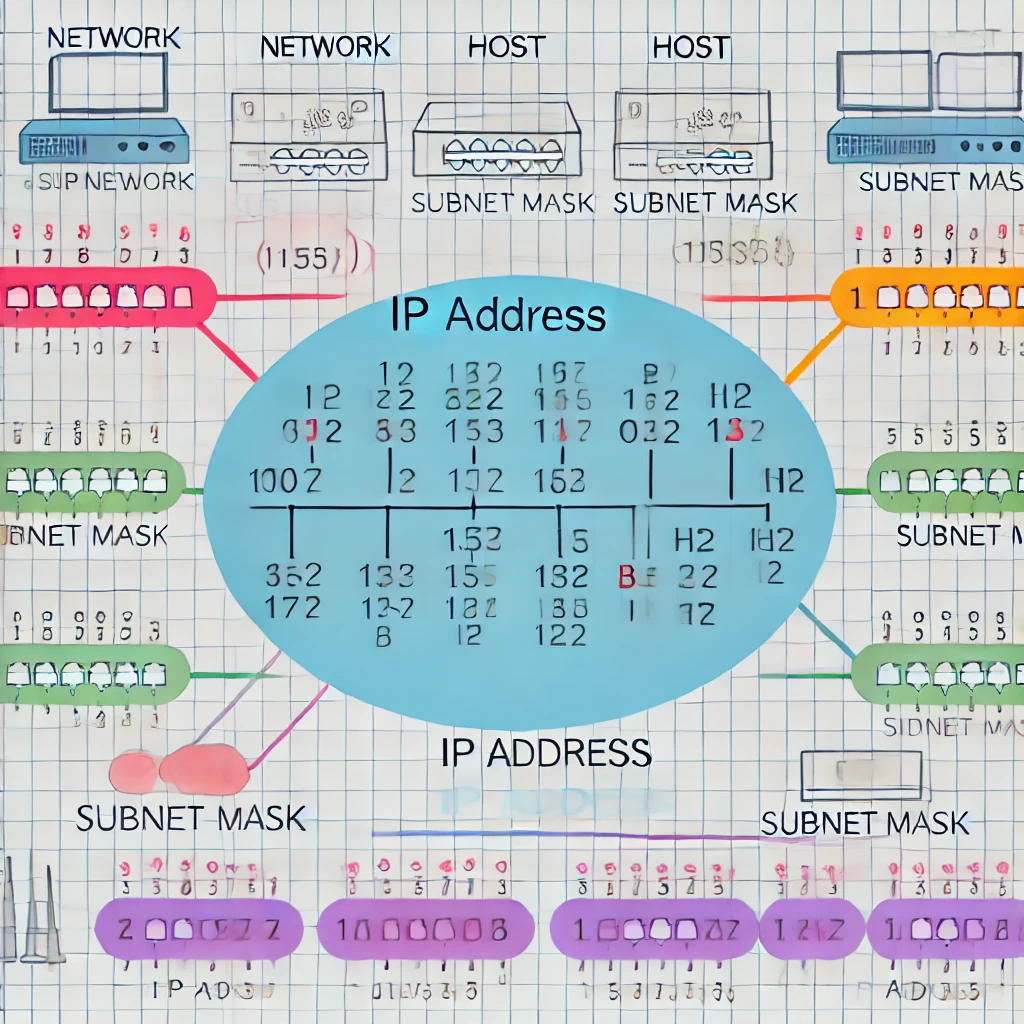Understanding Subnetting and IP Addressing: A Beginner's Guide
 Md Saif Zaman
Md Saif Zaman
In today's interconnected world, understanding the basics of networking is crucial for anyone working in IT or pursuing a career in technology. Two fundamental concepts that form the backbone of network communication are IP addressing and subnetting. In this blog post, we'll dive into these topics and explore their importance in modern networking.
What is an IP Address?
An IP (Internet Protocol) address is a unique numerical identifier assigned to each device on a network. Think of it as a digital postal address for your computer, smartphone, or any other network-enabled device. IP addresses serve two main purposes:
Identifying the host or network interface
Providing the location of the device in the network
There are two versions of IP addresses currently in use:
IPv4: A 32-bit address (e.g., 192.168.1.1)
IPv6: A 128-bit address (e.g., 2001:0db8:85a3:0000:0000:8a2e:0370:7334)
While IPv6 is gaining traction due to the exhaustion of IPv4 addresses, IPv4 is still widely used and is the focus of this blog post.
Understanding IP Address Structure
An IPv4 address consists of four octets (8 bits each), separated by dots. Each octet can range from 0 to 255. For example:
192.168.1.1
This address is divided into two parts:
Network portion
Host portion
The division between these portions is determined by the subnet mask.
What is Subnetting?
Subnetting is the practice of dividing a larger network into smaller sub-networks, or subnets. This process offers several benefits:
Improved network performance
Enhanced security
More efficient use of IP addresses
Better network management
To understand subnetting, we need to introduce the concept of a subnet mask.
Subnet Mask and CIDR Notation
A subnet mask is a 32-bit number that defines the network and host portions of an IP address. It typically looks like this:
255.255.255.0
This subnet mask is often represented in CIDR (Classless Inter-Domain Routing) notation as "/24" appended to the IP address. For example:
192.168.1.0/24
The "/24" indicates that the first 24 bits of the IP address represent the network portion, leaving 8 bits for host addresses.
Subnetting in Action
Let's walk through a simple subnetting example:
Given network: 192.168.1.0/24 Required subnets: 4
We need 2 bits to represent 4 subnets (2^2 = 4)
New subnet mask: 255.255.255.192 (/26)
Our subnets become:
192.168.1.0/26 (0-63)
192.168.1.64/26 (64-127)
192.168.1.128/26 (128-191)
192.168.1.192/26 (192-255)
Each subnet now has 62 usable host addresses (64 total minus network and broadcast addresses).
Why Subnetting Matters
Subnetting is crucial for:
Efficient address allocation: It allows for more precise distribution of IP addresses, reducing waste.
Improved security: Subnets can be isolated from each other, limiting the spread of security threats.
Better performance: Smaller broadcast domains lead to reduced network traffic and improved overall performance.
Simplified management: Network administrators can organize devices logically, making troubleshooting and maintenance easier.
Conclusion
Understanding IP addressing and subnetting is fundamental to grasping how modern networks function. While it may seem daunting at first, with practice, these concepts become second nature. As you continue your journey in networking, remember that these basics form the foundation for more advanced topics like routing, VLANs, and network design.
Stay curious, keep practicing, and don't hesitate to dive deeper into each of these topics. Happy networking!
Subscribe to my newsletter
Read articles from Md Saif Zaman directly inside your inbox. Subscribe to the newsletter, and don't miss out.
Written by
